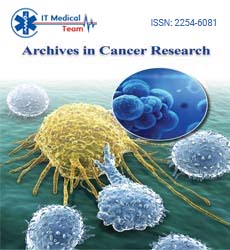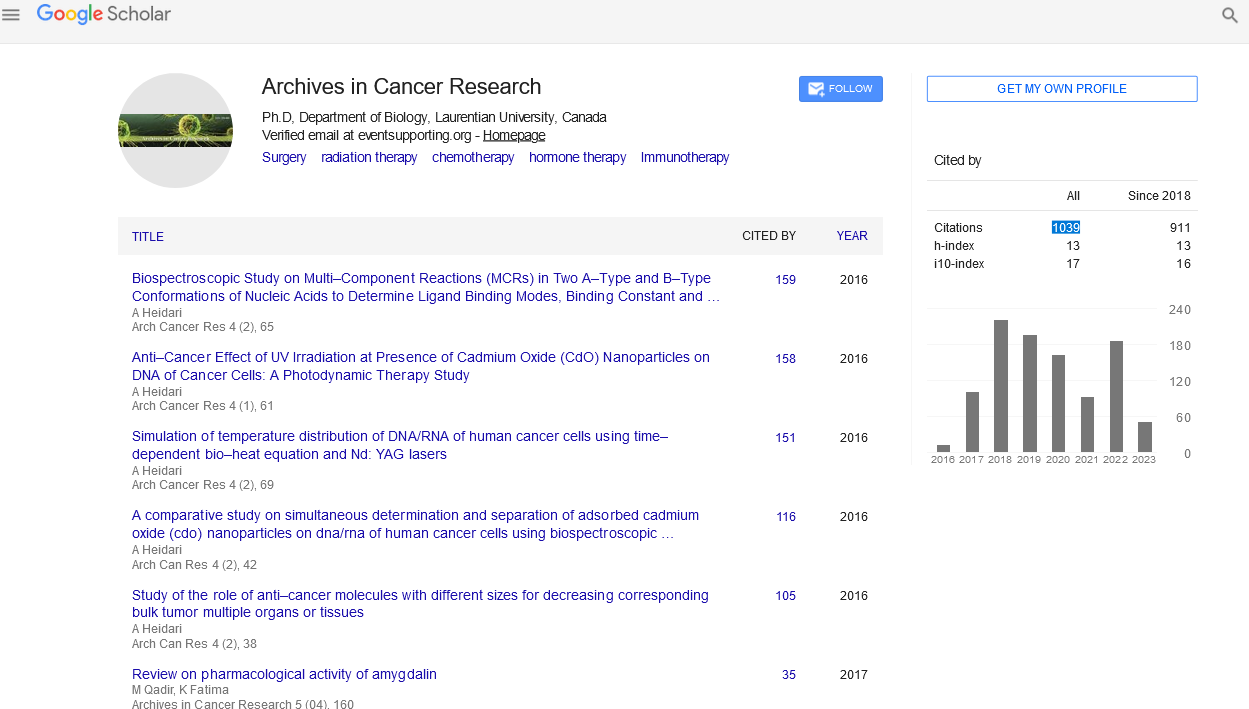Abstract
Precision and matched cancer drugs have the potential to enhance the prevailing biomarker approaches in cancer treatment. However, despite their promising potential, bound negative results have highlighted their limitations in molecular biology-driven treatment ways. This study aimed to gauge the clinical edges of preciseness therapies. Cancer treatment has been fully revolutionized within the past few decades, as many molecular alterations are known as drivers of cancer development and progression.1 Increasing advancements in genetic science have given rise to a growing interest in preciseness drugs, that aims to boost treatment ways by distinguishing therapies which will have an effect on specific targets supported their molecular make-up. moreover, personalised ways have LED to the next proportion of responding patients, longer progression-free survival (PFS), and improved overall survival (OS) compared with trials with unselected patients to the present finish, many basket trials listed participants supported the kind of mutation, notwithstanding the microscopic anatomy or affected organs,4 whereas umbrella trials listed participants with a similar variety of cancer microscopic anatomy or organ involvement and appointed them to completely different cohorts supported specific mutations.
Keywords
Cancer Migrants; Communication; Clinical trials; Oncology research;
Oncology research; Cancer research
Introduction
Therapies that provide true ‘clinical benefit’ ought to
considerably improve the amount and/or quality of survival. The
construct of ‘value’ is being more and more recognized in each
the interpretation of clinical trials and therefore the delivery
of cancer care. tiny progressive gains in therapeutic endpoints,
particularly people who ar unverified surrogates for survival or
its quality, offer borderline price the Society of Medical medicine-
Magnitude of Clinical profit Scale (ESMO-MCBS) and therefore
the yank Society of Clinical Oncology price Framework (ASCO-VF)
have planned frameworks to assess the clinical edges of latest
cancer therapies [1].
Research into the reason behind cancer involves many various disciplines together with biological science, diet, environmental
factors (i.e. chemical carcinogens). In reference to investigation
of causes and potential targets for medical care, the route used
starts with knowledge obtained from clinical observations, enters
basic analysis, and, once convincing and severally confirmed
results ar obtained, yield with clinical analysis, involving fittingly
designed trials on willing human subjects, with the aim to check
safety and potency of the therapeutic intervention technique.
a very important a part of basic analysis is characterization of
the potential mechanisms of carcinogenesis, in reference to the
kinds of genetic and epigenetic changes that ar related to cancer
development. The mouse is commonly used as a class model for
manipulation of the operate of genes that play a job in growth
formation, whereas basic aspects of growth initiation, like cause, ar assayed on cultures of bacterium and class cells [2,3].
Precision and matched cancer drugs have the potential to
enhance current genomic approaches. The persona of molecular
identification in predicting the response to targeted therapies and
therefore the limitations of diagnosing models presently used for
drug choice have hindered the right validation of preciseness
drugs ways. to boot, bound negative results have highlighted
the constraints of preciseness drugs in molecular biology-driven
treatment ways, despite its promising biological potential. Thus,
during this study, we tend to evaluate the clinical edges of cancer
preciseness and matched therapies for every target, mistreatment
the ASCO-VF and ESMO-MCBS frameworks [4,5].
Given the challenges bestowed by preciseness and matched
therapies, efforts to accelerate genomic analyses for personalised
drugs should still be embedded at intervals the context of clinical
trials and integrated with scientific and clinical cooperative
structures to deliver measurable edges to patients. However,
we'd like to debate whether or not these approaches ar helpful
for cancer patients. Here, we tend to delineated the clinical profit
parameters of matched and preciseness.
Discussion
Therapies for cancer patients by analysing matched and
preciseness medical care studies printed between January 2015
and Gregorian calendar month 2020. we tend to found many
targeted and matched therapies that were of low clinical profit
grade, particularly RAS/RAF/MAPK (excluding BRAF) and PI3K/
AKT/PTEN. Moreover, we tend to found that basket studies for
many cancers have baby-faced a harsh reality. However, restricted
sickness organ and several other preciseness and matched
medical care targets could increase therapeutic effects.
The detection of HER2 amplification as a driver mutation had
contributed vastly towards distinguishing another necessary
subgroup of patients World Health Organization benefited
from anti-HER2 inhibition altogether clinical settings. An
elementary shift was additionally ascertained in patients
diagnosed with NSCLC. The identification of EGFR mutations
and invertebrate microtubule-associated protein-like 4/ALK
(EML4-ALK) translocation has affected outcomes of advanced
NSCLC. Moreover, identification of the BRAF-V600E mutation
and its subsequent treatment with BRAF and FTO inhibitors
is being studied in phase III clinical trials. Once the declaration
of Cancer Moonshot, currently named Cancer Breakthroughs,
many basket and umbrella studies were conducted in a shot
to advance preciseness drugs cancer treatment mistreatment
targeted next-generation sequencing analysis, like the molecular
analysis for many appropriate medical care (NCI-MATCH)
(NCT0246506), molecular profiling-based assignment of cancer
medical care (NCI-MPACT) (NCT01827384), and therefore the
LungMap study for NSCLC (NCT03851445). In 2014, the SAFIR01/
UNICANCER study showed that thirteen of the patients received
matched medical care supported genomic analyses and ended
that the personalization of drugs was possible for rare genomic
alterations.17 However, the response rate was restricted to 100
percent, and therefore the medical care was of low clinical profit.
To boot, the SHIVA study showed that molecularly targeted agent-based molecular identification and matched medical care
failed to improve survival profit.
In the gift study, we tend to classify the promising therapeutic
targets supported their individual clinical profit values. Already
established sequence alterations and targets, specifically EGFR,
ALK, BRAF, and HER2, maintained their clinical benefit; but,
the RAS/RAF/MAPK (excluding BRAF mutation) and PI3K/AKT/
PTEN pathways, that ar standard necessary factors in control
the signal of cancer treatment targets, failed to have high clinical
edges for matched and preciseness drugs in our study. In distinction,
alpelisib for PIK3CA-mutated carcinoma had clinical edges supported
the termination of PFS within the clinical and capmatinib for MET
desoxyribonucleic acid fourteen skipping mutation-positive NSCLC
showed some response rate (41%-50%) in phase II clinical trial. In
KRAS G12C mutation solid cancers (almost strictly NSCLC and CRC),
sotorasib showed a response, however its survival profit has not
been verified in clinical trials [6-9].
There ar some limitations during this study. First, we tend
to analyzed knowledge that were printed once 2015. EGFR
mutations for NSCLC, ALK-positive for NSCLC and HER2-positive
for breast and stomachal cancers have already been established
as therapeutic targets and ar standard to possess high clinical
profit. However, our study showed that their clinical profit
score was low as a result of previous clinical trials was excluded.
Second, ESMO-MCBS forms 2A- and 2B-based clinical profit
rating is for phase III clinical trials and has bonus points with QoL
improvement. In distinction, preciseness and matched clinical
trials enclosed high unmet target requirements; so, the utility of
preciseness and matched treatments was valid by the response
in section I/II clinical trials mistreatment the ESMO-MCBS type
three. ESMO-MCBS type three has restricted points for ESMOMCBS
grade three while not QoL analysis. In distinction, ASCOVF
scores, together with section I/II and phase III clinical trials,
extremely related with the ESMO-MCBS scores in our study. we
tend to believe that our study findings ar significant evaluations
and hold high clinical connectedness.
In previous reports, preciseness and matched cancer therapies
supported molecular identification of cancer patients were
assumed to possess established the clinical paradigm.
Notwithstanding, their therapeutic impact isn't continually of
high clinical profit at intervals current treatment ways. Clinical
profit rating supported every target and pathway. In this study,
the ESMO-MCBS scales ranged from zero to four. Supported the
grade of every target (Figure 3A), TMB/MMR/MSI-H, ALK, and
NTRK were of high clinical profit on the size ROS-1, PD-L1, RET;
BRAF, BRCA, and EGFR were of low clinical profit for the target
throughout the analysis amount. Moreover, RAS/RAF/MAPK
(excluding BRAF) and PI3K/AKT/PTEN pathways were of terribly
poor clinical profit for therapeutic targets and were statistically
below alternative targets (P < zero.001). With regard to the cancer
sort solid tumours showed poor clinical profit, and these findings
demonstrate the problem of the basket study mistreatment
matched and preciseness therapies. Similarly, urothelial, breast,
and body part cancers (CRCs) were of lower grade, and therefore
the problem of the umbrella studies for these diseases was
known [10].
Conclusion
In this study, we tend to show that preciseness and matched
cancer therapies ar still underdeveloped with regard to clinical
profit values. The growth board and clinicians annotated these
preciseness ways and determined that they have to be revised
and their therapeutic targets got to be narrowed all the way
down to improve effectivity within the clinical setting. This study
showed that preciseness and matched cancer therapies need any
improvement. This is often in line with the views of the growth board and of clinicians that preciseness ways got to be revised to
boost their therapeutic effects.
Acknowledgement
I would like to thank my professor for his support and
encouragement.
Conflict of Interest
The authors declare that there is no conflict of interest.





